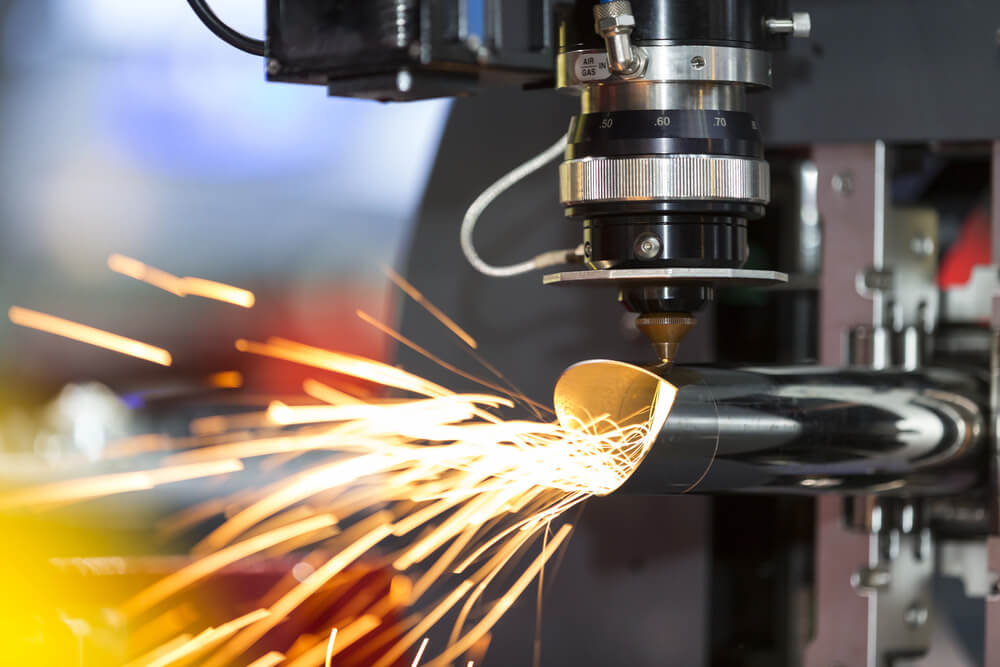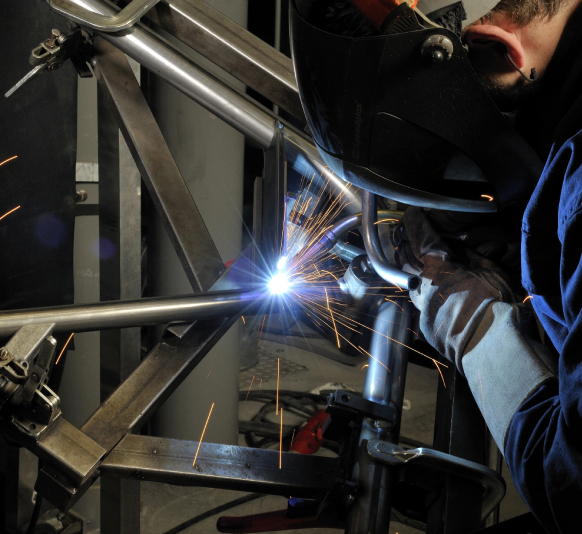Laser welding technology, a cornerstone of modern manufacturing, offers unmatched precision and efficiency. At XCEL Laser, we integrate this advanced technology to help industries achieve high-quality results with minimal waste. Let us explore the various benefits of laser welding machines, demonstrating how they can transform manufacturing processes through their innovative capabilities.

Speed and Efficiency: Revolutionizing Production Lines
A standout advantage of laser welding is its remarkable speed. This method surpasses traditional welding techniques, which often necessitate several passes to achieve high-quality joints, by completing the same tasks in a single pass. This is especially beneficial in environments where production speed is critical, allowing for the welding of thin materials at rates that can reach several meters per minute, thereby significantly boosting productivity.
Moreover, the quick pace of laser welding does not sacrifice the quality of the welds. On the contrary, it consistently produces robust and reliable joints. Enhanced using fiber-delivered beams from advanced laser systems like Nd and diode lasers, laser welding integrates smoothly into existing production lines. This integration is further optimized using multi-axis robotic systems that precisely control the welding process, tackling complex tasks with ease and efficiency.
Precision and Quality: Achieving Superior Welds
The precision of laser welding is unparalleled. The focused laser beam allows for pinpoint accuracy, targeting only the specific area of the material that requires joining. This not only reduces material wastage but also protects the integrity of the surrounding areas, ensuring that they remain unaffected by the high heat of the welding process.
This high degree of accuracy is crucial in industries such as aerospace and electronics, where even the slightest imperfection can lead to significant failures. Laser welding machines provide the control needed to execute complex welds on sensitive components without the risk of distortion or other defects often seen with more traditional welding methods.
Deep Penetration Welding: Enhanced Capability
Laser welding is not limited to surface work; it also excels in achieving deep, narrow welds thanks to the unique “keyhole” technique it employs. This method involves the laser melting through the material to create a keyhole filled with vaporized metal, which then collapses behind the laser beam, forming a tight, clean weld upon cooling. The result is a weld with a high depth-to-width ratio, ideal for thick or layered materials.
This capability allows for greater design flexibility in engineering applications. For example, it is possible to perform stake welding through lap joints—a task challenging for other welding technologies due to their limited penetration capabilities. Laser welding’s ability to create deep welds in a single pass without additional filler material makes it a valuable tool for constructing durable and robust components.
Low Distortion and Reduced Heat Input
Another significant advantage of using a laser welding machine is the minimal heat it introduces into the workpiece. The concentrated nature of the laser beam ensures that the heat is strictly confined to the area being welded, greatly reducing the likelihood of thermal distortion. This is particularly beneficial for working with complex assemblies where maintaining the dimensional stability of each component is critical.
Moreover, the reduced heat input leads to narrower heat-affected zones (HAZs), preserving the mechanical and physical properties of the materials being welded. This aspect is vital for maintaining the strength and durability of the final product, especially when working with sensitive materials that can degrade under excessive heat.
Material Versatility: A Wide Range of Applications
Laser welding’s adaptability to various materials is another testament to its revolutionary impact on manufacturing. From metals like stainless steel and aluminum to non-metallic materials such as plastics and textiles, laser welding machines handle diverse material types effectively. This versatility is particularly beneficial for industries that work with multiple material types, allowing for consistent welding techniques across different products.
For instance, in the automotive industry, the ability to weld different metals and alloys is crucial. Laser welding enables the joining of lightweight aluminum parts, commonly used in car bodies to reduce overall weight, with other metal components, enhancing vehicle efficiency and performance.
Similarly, in the medical sector, the precision and clean processing of laser welding are perfect for creating reliable, high-quality joins in medical devices, which often comprise a variety of metals and delicate components.
Enhanced Safety and Environmental Benefits
Laser welding also scores high on safety and environmental metrics compared to traditional welding methods. Being a non-contact process, laser welding minimizes the risk of accidents during operation. The equipment does not require direct contact with the material, reducing wear and tear and enhancing the safety of workers by distancing them from direct heat sources.
Additionally, laser welding produces fewer emissions and requires no consumables like flux or filler material, which often contribute to workplace hazards and environmental pollution. This aspect not only makes it a safer choice but also aligns with the growing industry trends towards greener manufacturing practices.

Single-Sided Accessibility and Non-Continuous Welding Flexibility
The non-contact nature of laser welding offers unique advantages in terms of accessibility and flexibility. Welding can be performed from one side of the workpiece only, which is particularly advantageous when accessing joints in confined or complex geometries. This feature simplifies the setup and increases the efficiency of the welding process, making it possible to reach and repair parts that might be inaccessible with traditional welding methods.
Moreover, laser welding is not limited to continuous welds; it is equally adept at producing high-quality spot or stitch welds. This flexibility is invaluable for applications requiring intermittent welding, such as in the fabrication of large panels or enclosures where continuous welds could lead to warping due to excessive heat input.
Non-Dependence on Vacuum Environments
Unlike some high-energy beam welding processes, such as electron beam welding, laser welding does not require a vacuum environment to operate effectively. This ability to weld at atmospheric pressure without the need for elaborate vacuum chambers significantly reduces setup costs and complexity.
It also speeds up the process, as there is no need to wait for the environment to be prepared before starting a weld. Gas shielding, often with inert gases like argon, is still used to prevent oxidation at the weld site, but this is a far simpler setup compared to maintaining a vacuum.
The Role of Automation in Laser Welding
Automation stands out as one of the defining features of modern laser welding applications. The integration of laser welding machines into robotic systems is straightforward, thanks to the technology’s compatibility with CNC machinery and advanced robotic arms. This seamless integration allows for precise control over the welding process, with robots handling the meticulous positioning and movement necessary for consistent, high-quality welds.
The use of automated systems not only increases the production speed but also enhances the repeatability of welds across large production volumes. Industries looking to scale up their operations without sacrificing quality find this particularly appealing. For example, in manufacturing sectors where customization and precision are critical, such as in aerospace or laser cutting intricate designs for consumer electronics, automation helps maintain stringent quality standards with minimal human error.
As we have seen, the benefits of laser welding extend far beyond the simple joining of materials. Its impact on manufacturing efficiency, product quality, worker safety, and environmental sustainability makes it an indispensable tool in the modern industrial landscape.
